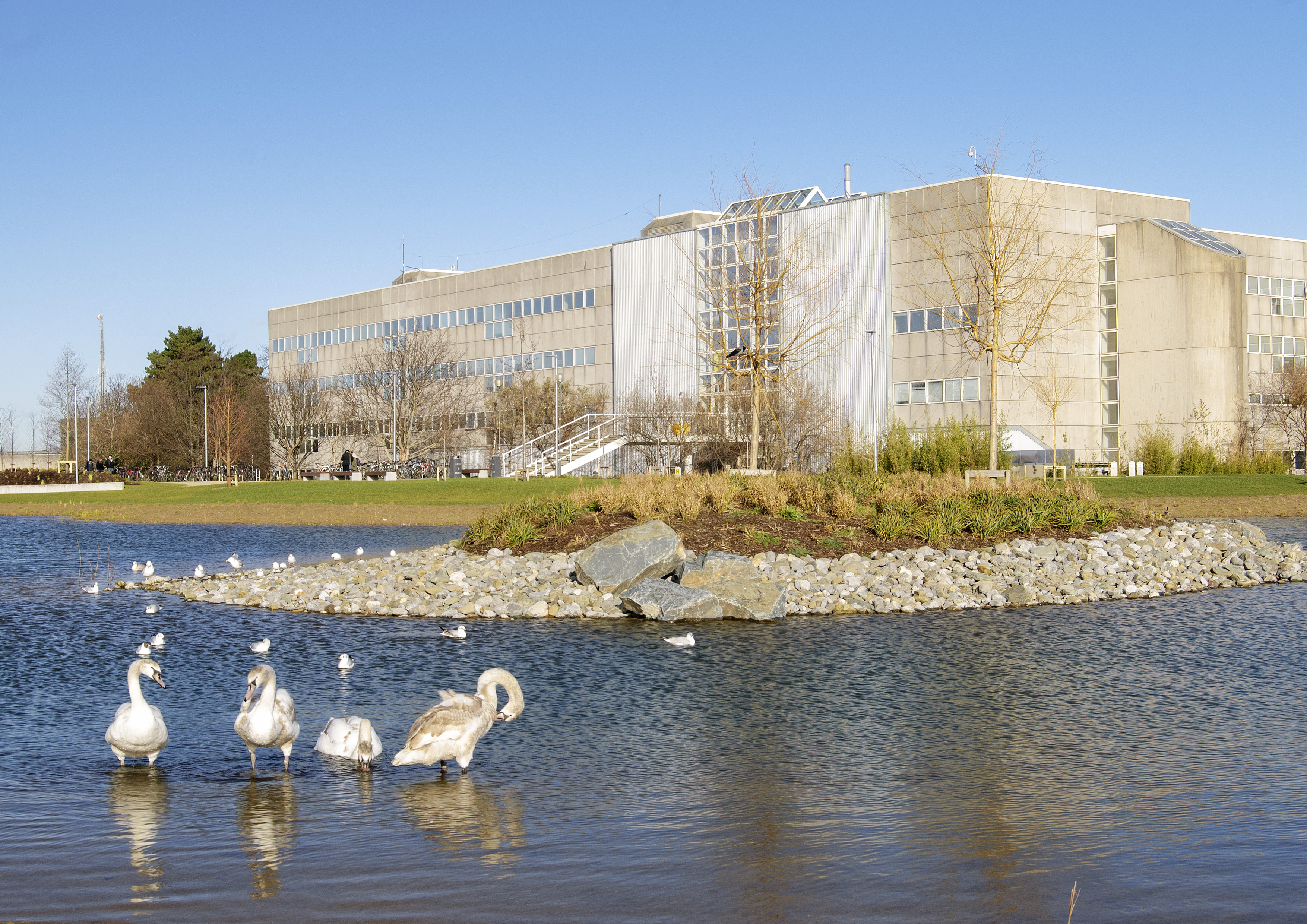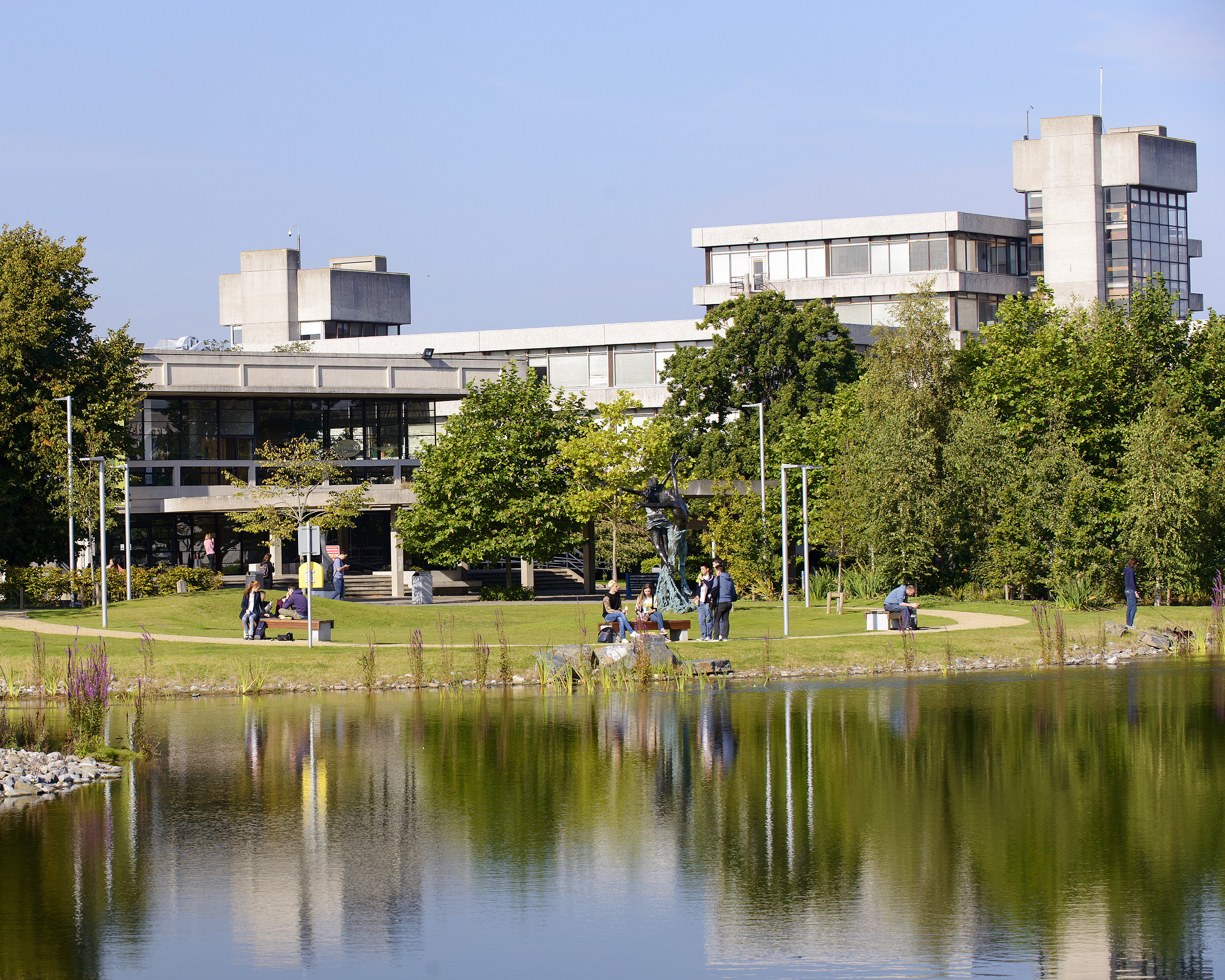The management of the landscape is focused towards engendering a healthy, sustainable and living campus setting for the benefit of staff, students, alumni and the wider University Community.
The 335 acres Belfield Campus has been developed around several 18th and 19th Century Estate Houses and curtilages which complement and enhance the original sylvan and parkland setting for which the University is known.
The Campus currently encompasses approximately 40 acres of woodland, several natural and man-made lakes and water courses, naturalised areas such as wildflower meadows and formal and informal landscaped areas, all helping to support the rich mixture of biodiversity on Campus.
Trees and Woodlands
The Belfield Campus landscape portfolio currently includes approximately 50,000 trees comprising of 76 different tree species of which approximately 25,000 have been planted since 2007.
The development of the Boundary Woodland Walks network which weaves through the various woodlands has been hugely successful in opening up sections of the campus which had hitherto been little used and has promoted greater awareness of the wide range of biodiversity present on campus.
“50,000 trees comprising of 76 different tree species of which approximately 25,000 have been planted since 2007”
The Trees and Woodlands Management Programme adopts a sensitive approach to the management of woodlands on campus by balancing the necessity of Health & Safety tree surgery with annual tree planting of appropriate species, minimal intervention in natural areas where possible and initiatives such as:
- Allowing a proportion of felled timber to decompose in woodlands to provide a habitat for fungi and invertebrates
- Pruning rather than felling certain trees where possible to leave ‘Habitat sticks’ for birds, mammals and insects
- Management of ivy removal on a selective phased basis to provide food for birds and a habitat for wildlife
- Management of vigorous non-native species
- Veteran Tree Management Programme to enhance the lifespan of the cohort of 150-200 year old trees on Campus by formative selective pruning based on Arboricultural surveys
- Use of non-potable grey water from campus wells for irrigation of trees and plants

Flora and Fauna
The Belfield campus currently supports a wide range of flora and fauna including 26 different species of birds, the largest of which is two pairs of Mute Swans (Cygnus olor) which currently reside on the Middle and Upper Lakes. These swans and other birds such as kingfishers, gulls and ducks which reside on or visit the lakes are fed and cared for by Estate Services grounds personnel on a daily basis.
Wildflower meadows have been encouraged at various sites on campus e.g. Conway, and rear of Agriculture, to encourage a more diverse range of natural flowering plants and the insects that feed upon them. UCD Estate Services is currently supporting the UCD Students Union and UCD EcoSoc in developing a `Bee Garden` on campus, where students will be encouraged to plant and care for appropriate flowering plants in order to increase the numbers of bees and other pollinators on Campus. Recently, a species of Solitary Miner bee has been identified on Campus. The area has been cordoned off and the landscape management regime adjusted to reflect the discovery.
Ecological surveys have been carried out recently as part of the Science Centre Development BREEAM Accreditation and Upper Lake Construction, complementing existing bird and tree surveys.
Lakes and Water Courses
There are currently three lakes and numerous water courses on Campus. The Lower Lake is located in the Oak Walk Woodland at the rear of Woodview and is made up of two interconnected waterbodies which were developed to act as a reed-bed filtration for surface water run-off before it leaves the campus. This water body supports a wide range of water and marginal planting, insects such as dragon flies, fish and water fowl.
The Middle Lake is an ornamental lake located in the centre of Campus and supports -amongst other things- a breeding pair of swans, water fowl such as ducks and moorhens.

The newly formed Upper Lake was constructed in 2013 as a natural lake which is designed to attenuate rainwater from the Sutherland Law building and future developments and to help re-introduce Biodiversity into the core of the Campus. This lake has been a significant development, bringing biodiversity into the centre of the campus and creating a unique amenity and focal point for the eastern side of the campus.
The lake includes a planted island as a breeding ground and sanctuary for birds, marginal and aquatic planting and graduated levels and cobble beached areas for wading birds and animals. The lake was inoculated with mud and aquatic plants from the lower lakes to help introduce invertebrates to the area and increase the biodiversity. The lake is managed as a natural area, with appropriate mowing frequencies and strict controls on use of herbicides and fertilisers.

